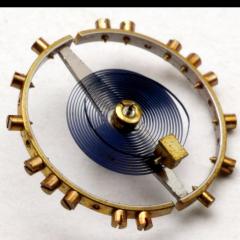-
Recently Browsing
- No registered users viewing this page.
-
Topics
-
Posts
-
By HorologyHead · Posted
Hi to Blackminou29–am a collector/ caretaker—good luck to you following your repair course—with hindsight I wish I’d pursued a career in both watchmaker/ jeweler fields—good luck with whatever career passion you engage. Thank you Watchweasol for posting the amazing TZIllustratedGlossary! Best wishes, Mike -
yes I noticed the new site and I miss the old site. It's the unfortunate problem of the Internet here today gone tomorrow sometimes some of the stuff gets backed up and sometimes well it does not then the problem with the early Seiko's were there were not necessarily designed for distribution across the planet and as such there is no customer support for them. So trying to find early stuff like technical information or sometimes even parts list for older Seiko is is problematic. But I did find you a you tube video. A quick look he seems to take a heck of a lot of time to actually get to the service single I did not watch all that but it does look like he did disassemble or started to say there's a tiny bit here
-
By HorologyHead · Posted
RichardHarris123: Hello and welcome from Leeds, England. I have family all over Australia, went as £10 poms Thanks Richard. Hope you’re able to visit your family here and that they’ve all done well 🙂 My relatives arrived from England in the 1790s transported on the ‘Second & Third Fleets’—a story of timber sailing ships, of convicts and doing well in this huge Country of Australia. When I visited the UK in the 1980s, I was too young to comprehend the depth and breadth of its history… Best wishes, Mike William Chapman, my 4th great Grandad’s charges, at age 23 read at the Old Bailey; sentenced to 7 years of transportation to Sydney. -
The whole process and the progress are closely observed, it's hand-driven and very controlled. I can't see the "danger", unless you are watching the TV while doing it. As you could have read, and in this quote "wheel" is the balance-wheel.
-
Have you got the pallet fork installed in the movement when you see the train move when using the setting works? As nevenbekriev said, without the pallet fork to lock the train, the behaviour you are describing is normal. If this is happening with the pallet fork installed, you have a problem in the gear train, it should be immobile when the pallet fork is locking the escape wheel. The fit of the circlip above the pinions on that wheel is crooked in your pictures, it should sit flat up against the upper pinion as in Marc’s picture. Hope that helps, Mark
-







Recommended Posts